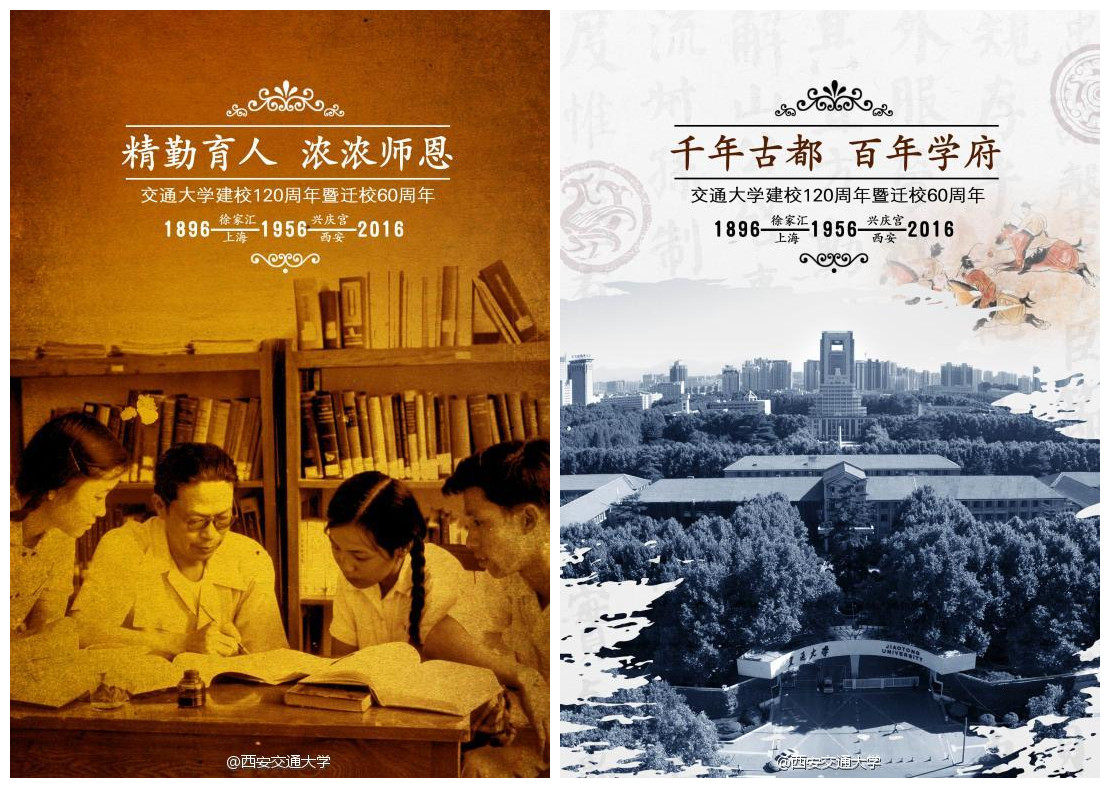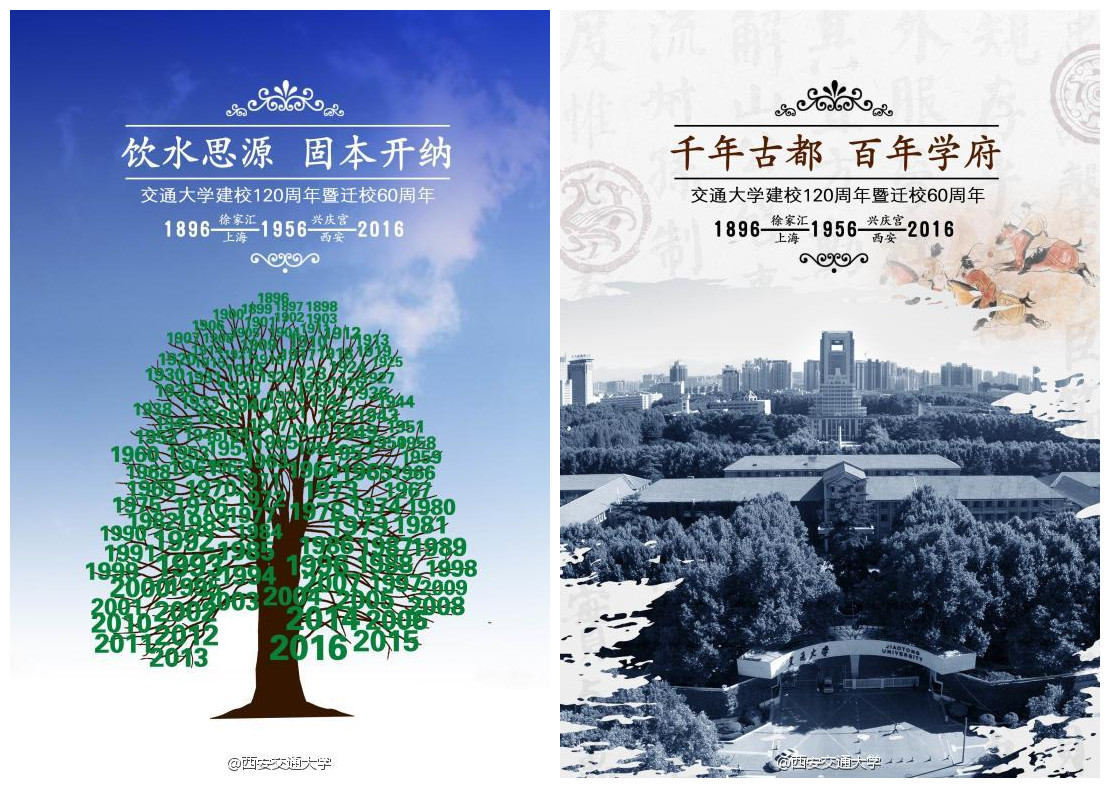One of China's top academic institutions, Xi'an Jiaotong University in Shaanxi province willcelebrate, on Friday, the 120th anniversary of its establishment and the 60th anniversary of itsrelocation.
Since its foundation in 1896 in Shanghai as Nanyang College, one of the earliest universities inmodern China, Xi'an Jiaotong University has cultivated innovative talents using global educationconcepts and cooperating with colleges and universities around the world.
Since 1896, it has made major contributions to modern education in China by hiring foreignteachers, translating and publishing foreign textbooks and sending students abroad.
From 1896 to 1921, the university has hired 29 foreign teachers in areas of law, diplomacy,motoring and other disciplines.
In 1898, the university founded the Nanyang College Translation and Publishing School, the firstof its kind in modern China.
That same year, the university sent its first group of students to foreign countries, and by theend of 1905, it had sent 47 students to Japan, the United States, Britain and Belgium, amongwhom seven received their doctorate degree and 10 received their master's.
The college's overseas students in science and technology were the backbones of the ChineseAmerican Student Association.
Graduates from the university were excused from examinations to study in Britain based on theagreement they made at that time.


Golden age
In 1930s, the university underwent rapid development in both scale and management.
It established five schools, in science, management, civil engineering, mechanical engineeringand electrical motors, and two departments of foreign and Chinese languages and a researchinstitute.
The university also combined its science, engineering, management schools to train a numberof its students, such as social activist Wang Daohan, entrepreneur Wang An and 21academicians from the Chinese Academy of Sciences and the Chinese Academy ofEngineering.
During the 1930s, the university was honored as the Oriental Massachusetts Institute ofTechnology for its advanced teaching and management methods.
At this time, the gathered renowned professors and scholars such as Qiu Weiyu, professor andinnovator of Chinese modern physical education who received his master's from MIT, andZhang Tingjin, professor of electrical engineering and founder of China's radio industry whoreceived his master's from Harvard University.
They brought back the world's latest educational philosophies and knowledge, laying afoundation for the university's development.
The university also aimed to provide students with a comfortable learning environment and abroad international perspective.
The textbooks used by students at that time were mostly foreign language textbooks introducedfrom international universities.
Qian Xuesen, a scientist and alumnus of Xi'an Jiaotong University, likened the course hestudied at the university to the one he studied at MIT's Department of Aeronautical Engineering.In 1955, the State Council decided to move the university to Xi'an, upholding its longtimetraditions while promoting the internationalization of education through the overseascooperation, innovating teaching resources and building research platforms. One of China's top academic institutions, Xi'an Jiaotong University in Shaanxi province willcelebrate, on Friday, the 120th anniversary of its establishment and the 60th anniversary of itsrelocation.
Since its foundation in 1896 in Shanghai as Nanyang College, one of the earliest universities inmodern China, Xi'an Jiaotong University has cultivated innovative talents using global educationconcepts and cooperating with colleges and universities around the world.
Since 1896, it has made major contributions to modern education in China by hiring foreignteachers, translating and publishing foreign textbooks and sending students abroad.
From 1896 to 1921, the university has hired 29 foreign teachers in areas of law, diplomacy,motoring and other disciplines.
In 1898, the university founded the Nanyang College Translation and Publishing School, the firstof its kind in modern China.
That same year, the university sent its first group of students to foreign countries, and by theend of 1905, it had sent 47 students to Japan, the United States, Britain and Belgium, amongwhom seven received their doctorate degree and 10 received their master's.
The college's overseas students in science and technology were the backbones of the ChineseAmerican Student Association.
Graduates from the university were excused from examinations to study in Britain based on theagreement they made at that time.
Golden age
In 1930s, the university underwent rapid development in both scale and management.
It established five schools, in science, management, civil engineering, mechanical engineeringand electrical motors, and two departments of foreign and Chinese languages and a researchinstitute.
The university also combined its science, engineering, management schools to train a numberof its students, such as social activist Wang Daohan, entrepreneur Wang An and 21academicians from the Chinese Academy of Sciences and the Chinese Academy ofEngineering.
During the 1930s, the university was honored as the Oriental Massachusetts Institute ofTechnology for its advanced teaching and management methods.
At this time, the gathered renowned professors and scholars such as Qiu Weiyu, professor andinnovator of Chinese modern physical education who received his master's from MIT, andZhang Tingjin, professor of electrical engineering and founder of China's radio industry whoreceived his master's from Harvard University.
They brought back the world's latest educational philosophies and knowledge, laying afoundation for the university's development.
The university also aimed to provide students with a comfortable learning environment and abroad international perspective.
The textbooks used by students at that time were mostly foreign language textbooks introducedfrom international universities.